Sylff Association Secretariat office will be closed for the year end and New Year holidays from December 27, 2025 to January 4, 2026. We will resume our operations on January 5.
We wish all of you a peaceful new year.
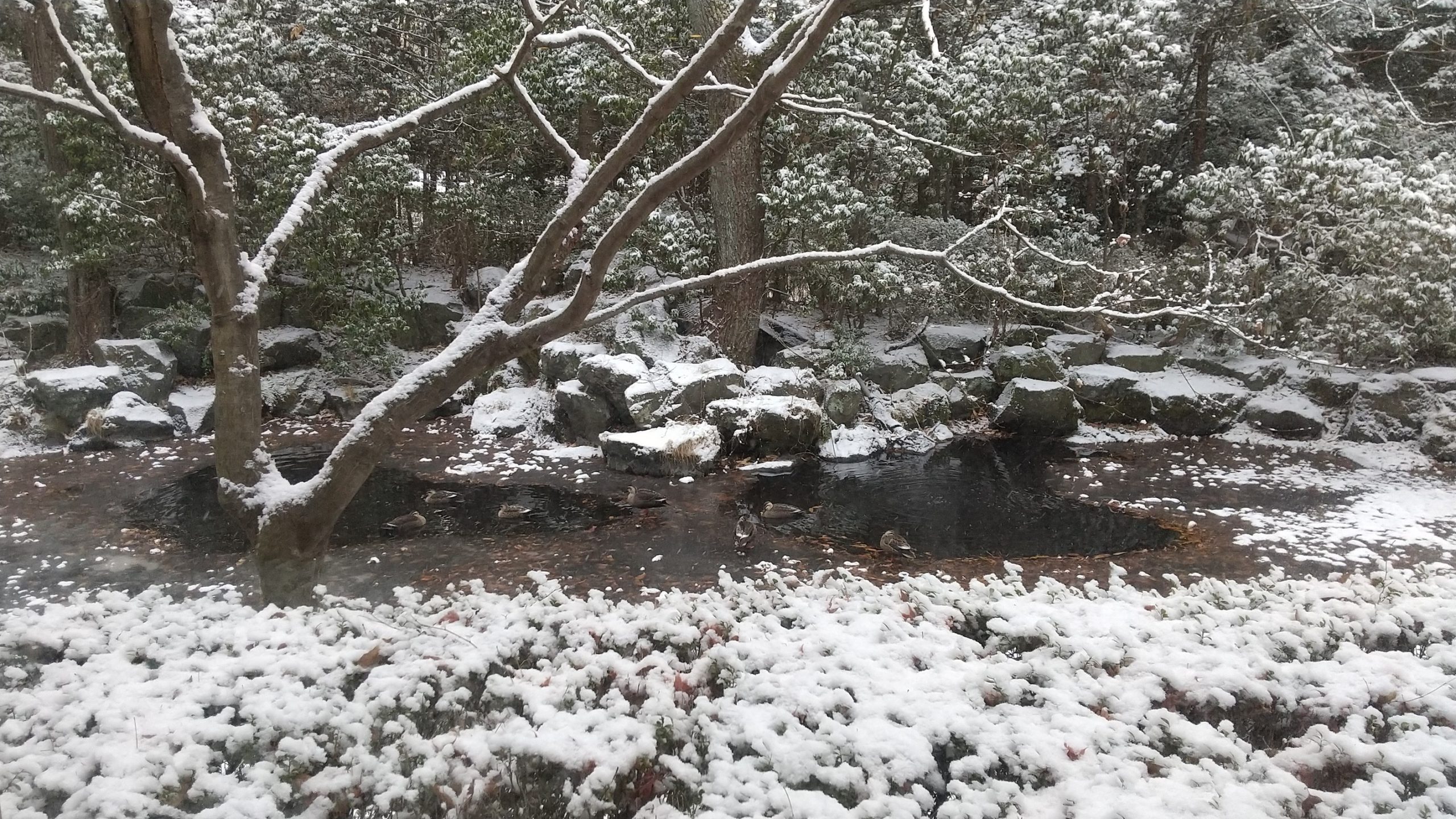

December 24, 2025
Sylff Association Secretariat office will be closed for the year end and New Year holidays from December 27, 2025 to January 4, 2026. We will resume our operations on January 5.
We wish all of you a peaceful new year.


December 12, 2025
By 30645
Guatemalan participation in Canada’s Agricultural Stream program has surged nearly 200% since 2016, highlighting migration’s role in rural survival and development. But Chris Little (York University, 2019–21) reports that growing uncertainty over migration pathways is raising questions about sustainability and inequality.

A rural Guatemalan community with high levels of out-migration. Author’s own work.
Guatemalan participation in the Agricultural Stream (AS) of Canada’s Temporary Foreign Worker Program (TFWP) has increased by 194% since 2016, a pace far outstripping the 77% growth in migrant farmworker numbers overall (Statistics Canada 2025).
With almost 20,000 Guatemalan AS participants in 2024, this migration flow is small compared to the huge flow of irregular migrants from Guatemala to the United States but is still a significant component of the 19.1% of Guatemalan GDP made up by remittances in 2024 (World Bank 2025).
Yet in the current hemispheric political context, with migration pathways being called into question and in some cases curtailed, the role of migration in Guatemala’s development may be changing.
Most workers who migrate from Guatemala under the AS are smallholder farmers, or campesinos, in their home communities. In my doctoral dissertation, tentatively titled Finca Logic: Hemispheric Agrarian Change and Guatemalan Migrant Farmworkers in Ontario, I am exploring the relationship between agrarian change and labor migration in the Americas through the case study of the growing population of Guatemalan migrant farmworkers in Ontario greenhouse agriculture.
Drawing on over 100 interviews, I take a labor-centered approach to analyzing the impact of transnational labor migration on the organization of agricultural production at both ends of the migration journey—Ontario and Guatemala.
Temporary migrant labor programs are often posited to be beneficial to the sending country, the receiving country, and the migrants themselves—so-called circular or “triple win” migration (Rannveig Agunias and Newland 2007; Castles and Ozkul 2014; Wickramasekara 2011).
While there are undoubtedly benefits to all parties engaged in migration—remittances for the migrant, foreign exchange for the sending country, labor for the receiving country—the results of participation for the migrant workers themselves appear to be much more complex and contradictory than this framework might suggest.
My doctoral dissertation research critically interrogates the “triple win” paradigm. It investigates the socioeconomic conditions that shape Guatemalan campesinos’ migration practices and the developmental impacts of participation in the AS, particularly with regard to land distribution. I seek to understand the Guatemalan side of the temporary migration story, which is under-researched compared to the AS and its sister program, the Seasonal Agricultural Worker Program (SAWP) in general, and where much more attention has been paid to the specific experiences of the more longstanding participant nationalities, particularly Mexican and Jamaican.
Through my research, I find that the developmental possibilities for participants in the program are often mixed and frequently severely constrained by the immediacy of day-to-day subsistence needs for workers and their families and the effects of the highly unequal distribution of land in Guatemala.
This situation is compounded by two other factors: the vulnerability of temporary migrant workers to losing access to employment through the program and, in a wider respect, the limited number of spaces relative to demand for the program, even amidst the significant growth in Guatemalan participation and the AS overall.
Often, participants compared their experiences to the nature of irregular migration to the United States, which was generally framed as offering increased possible reward but at much greater possible risk.
Guatemalan participants in the AS face deeply unequal land distribution as campesinos in their home country. This “land question” is demonstrated by the fact that just 2.5% of the total number of farms control some 65% of arable land, while another 88% of farms share a mere 16% of arable land (Lopez-Ridaura et al. 2019).
In other words, a huge number of campesinos have access to a remarkably small proportion of arable land, while a small number of large landowners predominate. Unequal land distribution in Guatemala, compounded by extractive projects and the dispossession and repression associated with them (Alonso-Fradejas 2012; 2021; Konforti 2022; Little 2024; Nolin and Russell 2021), is the crux upon which rests a society profoundly unequal in broader economic and political terms as well.
Due to constrained possibilities for rural development and sustainable livelihoods, Guatemalans turn to labor migration as a survival strategy—both through participation in the AS and in the much larger irregular flows to the United States. My doctoral dissertation research historically situates this dynamic, placing the interview data collected within the lineage of campesino labor regimes in Guatemala and the different ways in which the struggle over the means of social reproduction has taken place between campesinos and the ruling class.
In the twentieth century, violent repression of land reform efforts was the basis for the 36-year-long Guatemalan Civil War. Following the peace accords signed in 1996, the land question has remained unresolved and a key area of social conflict and inequality within the country, with the individualized form of land reform pursued through the accords criticized as insufficient to change the dynamics of land distribution in any substantive way (Gauster and Isakson 2007; Granovsky-Larsen 2013; Palma Murga 1997; Short 2008).
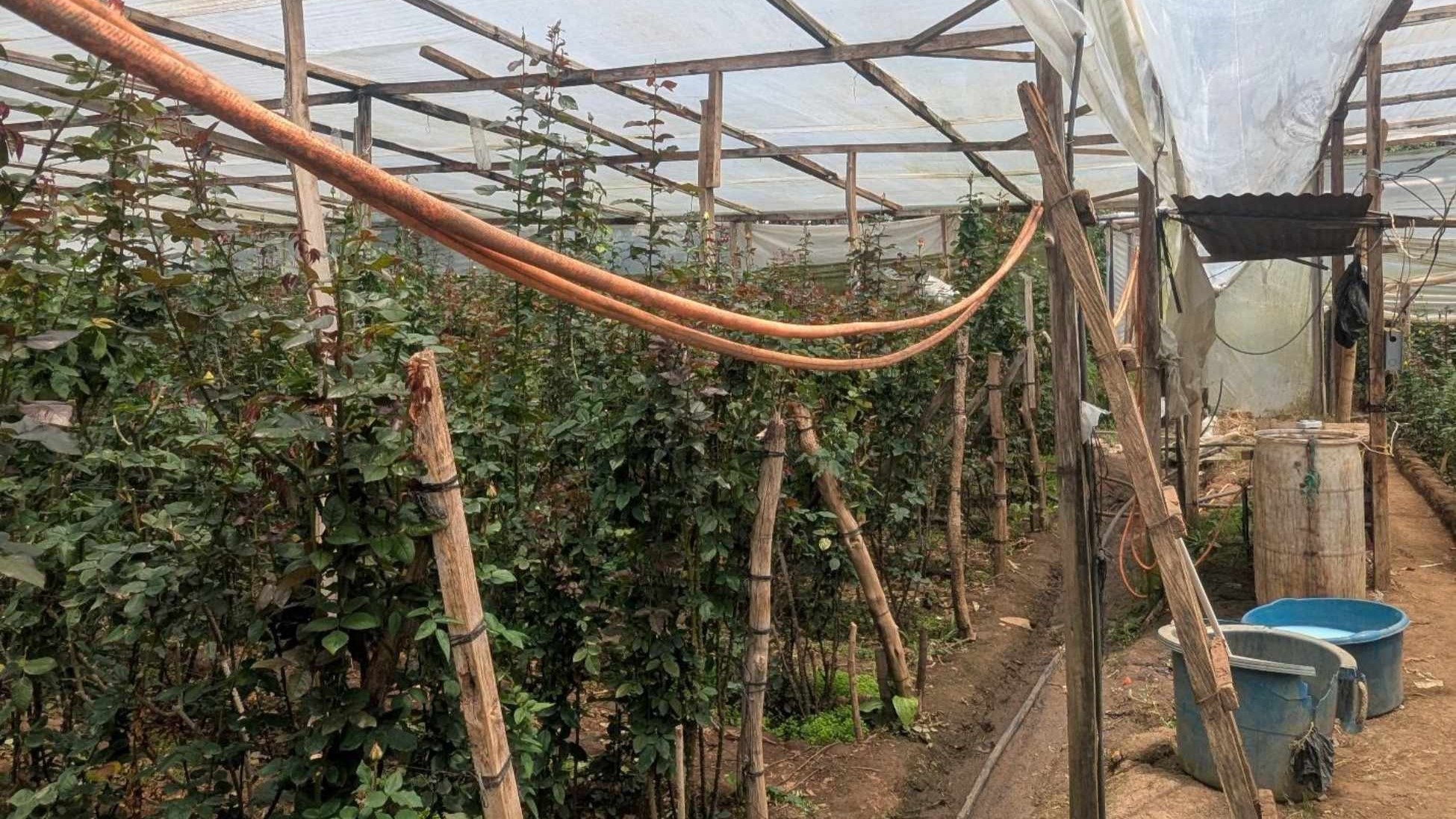
Floriculture in a campesino community with high out-migration. Author’s own work.
The 2024 SRG award enabled me to return to Guatemala in June–July 2025 to follow up on some of the threads that had emerged from my primary round of fieldwork in 2024. I have been able to speak with government representatives, social movement actors, and people from communities that have been impacted by high rates of out-migration. This process involved targeted engagement with participants who could deepen the findings from my first round of fieldwork, which have demonstrated the heterogeneity of experiences for Guatemalan campesino participants in Canada’s TFWP-AS.
In particular, I found that government actors and social movement representatives shared concerns regarding the sustainability of Guatemala’s reliance on migration as a mode for development. These concerns were bolstered by interviews with workers and members of communities with high rates of TFWP-AS participation.
These participants recognized the need to look for alternatives given the uncertainty over migration possibilities in general and the limited availability of places in documented migration programs such as the TFWP-AS.
This underscores the importance of conducting labor-centered research on temporary migration programs, as the heterogeneity of experiences and the impact of remittances could be missed without developing a more granular picture of the community level. I am currently in the process of continuing to review and process the findings from this round of fieldwork and to integrate them in a process of comparison with prior findings. These will allow me to understand the potential developmental impacts of changes or limitations in migration possibilities for Guatemalan campesinos, both with regard to migration to Canada and also to the United States.
The SRG grant has also enabled me to strengthen my working relationship with Guatemalan research assistants, with whom I intend to collaborate on further projects that will follow a participatory research approach. One key aspect of the research—confirmation that workers understand their situations and prospects in ways that outsiders cannot—is the driving force behind my plans for further research beyond the doctoral dissertation that I am currently working on completing.
I returned to Guatemala in late October to visit two organizations working to defend land rights and promote food sovereignty for campesinos. With this experience, I am in the process of developing ideas for dissemination of my dissertation findings in a manner that can inform and support movements toward food sovereignty and providing alternatives to temporary labor migration for campesinos where communities seek such alternatives.
Support from the Sylff Association has been integral to deepening my understanding of the complex and shifting reality of rural life in Guatemala amid temporary migration flows. It will continue to bear fruit as I conclude this portion of my research and utilize it as a foundation for further investigation and action.
Alonso-Fradejas, Alberto. 2012. “Land Control-Grabbing in Guatemala: The Political Economy of Contemporary Agrarian Change.” Canadian Journal of Development Studies 33 (4): 509–28. https://doi.org/10.1080/02255189.2012.743455.
Alonso-Fradejas, Alberto. 2021. “Life Purging Agrarian Extractivism in Guatemala: Towards a Renewable but Unlivable Future?” In Agrarian Extractivism in Latin America, edited by Ben M. McKay, Alberto Alonso-Fradejas, and Ezquerro-Cañete. Routledge.
Castles, Stephen, and Derya Ozkul. 2014. “Circular Migration: Triple Win, or a New Label for Temporary Migration?” In Global and Asian Perspectives on International Migration. Springer, Cham. https://doi.org/10.1007/978-3-319-08317-9_2.
Gauster, Susana, and S. Ryan Isakson. 2007. “Eliminating Market Distortions, Perpetuating Rural Inequality: An Evaluation of Market-Assisted Land Reform in Guatemala.” Third World Quarterly 28 (8): 1519–36. https://doi.org/10.1080/01436590701637375.
Granovsky-Larsen, Simon. 2013. “Between the Bullet and the Bank: Agrarian Conflict and Access to Land in Neoliberal Guatemala.” The Journal of Peasant Studies 40 (2): 325–50. https://doi.org/10.1080/03066150.2013.777044.
Konforti, Lazar. 2022. “‘Nosotros No Comemos Caña’: Defence of Territory and Agrarian Change in the Polochic Valley, Guatemala.” Thesis, University of Toronto. https://tspace.library.utoronto.ca/handle/1807/125620.
Little, Chris. 2024. “The Extraction of Migrant Labor-Power.” In The Labor of Extraction in Latin America, edited by Kristin Ciupa and Jeffery R. Webber. Latin American Perspectives in the Classroom. Rowman & Littlefield.
Lopez-Ridaura, Santiago, Luis Barba-Escoto, Cristian Reyna, Jon Hellin, Bruno Gerard, and Mark van Wijk. 2019. “Food Security and Agriculture in the Western Highlands of Guatemala.” Food Security 11 (4): 817–33. https://doi.org/10.1007/s12571-019- 00940-z.
Nolin, Catherine, and Grahame Russell. 2021. Testimonio: Canadian Mining in the Aftermath of Genocides in Guatemala. Between the Lines.
Palma Murga, Gustavo. 1997. “Promised the Earth: Agrarian Reform in the SocioEconomic Agreement.” In Negotiating Rights: The Guatemalan Peace Process. Accord 2. Conciliation Resources.
Rannveig Agunias, Dovelyn, and Kathleen Newland. 2007. Circular Migration and Development: Trends, Policy Routes, and Ways Forward. MPI Policy Brief. Migration Policy Institute.
Short, Nicola. 2008. The International Politics of Post-Conflict Reconstruction in Guatemala. Palgrave Macmillan. http://www.vlebooks.com/vleweb/product/openreader?id=none&isbn=978113704 0848.
Statistics Canada. 2025. “Table 32-10-0221-01 Countries of Citizenship for Temporary Foreign Workers in the Agricultural Sector.” Table 32-10-0221-01. May 9. https://doi.org/10.25318/3210022101-eng.
Wickramasekara, Piyasiri. 2011. “Circular Migration: A Triple Win or a Dead End.” SSRN Scholarly Paper No. 1834762. Social Science Research Network, February 1. https://doi.org/10.2139/ssrn.1834762.
World Bank. 2025. “Personal Remittances, Received (% of GDP).” BX.TRF.PWKR.DT.GD.ZS. World Bank. https://data.worldbank.org/indicator/BX.TRF.PWKR.DT.GD.ZS.



December 11, 2025
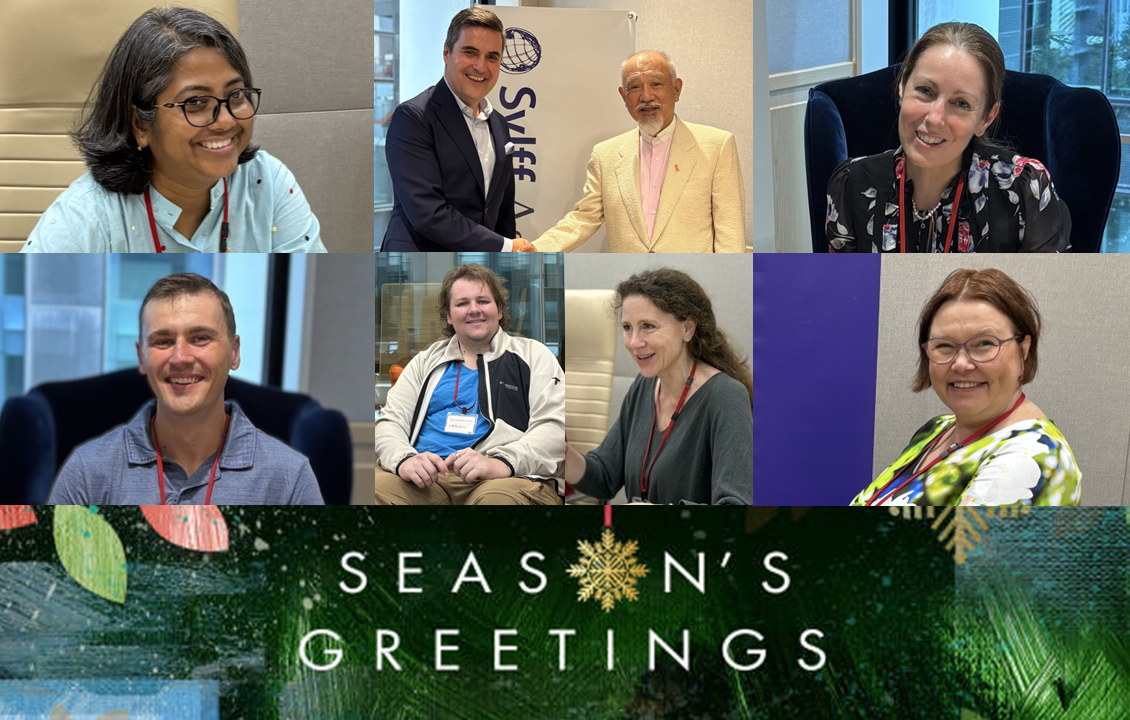 As 2025 draws to a close, we extend our heartfelt gratitude to all members of the Sylff community for your continued commitment to the ideals and operations of our program.
As 2025 draws to a close, we extend our heartfelt gratitude to all members of the Sylff community for your continued commitment to the ideals and operations of our program.
This year, we were delighted to welcome many fellows and administrators to our new office following our move to the Sasakawa Peace Foundation Building in the spring. Guests visited us from UC Berkeley, UC San Diego, the University of Chile, INSEAD, Comenius University, Deusto University, the University of Helsinki, the Fletcher School, the University of Texas at Austin, Jadavpur University, Canterbury University, and Jilin University.
In addition, members of the Sylff Association secretariat traveled to meet with university officials, SSC members, and fellows at the University of São Paulo, Princeton University, Columbia University, the Juilliard School, Paris Conservatoire, INSEAD, the University of Jordan, Ben-Gurion University of the Negev, the University of Indonesia, Gadjah Mada University, Chiang Mai University, Universiti Malaya, Jadavpur University, Waseda University, Jagiellonian University, the University of Latvia, and Keio University.
These visits provided valuable opportunities to catch up on Sylff program operations at each institution and to connect with both current and graduated fellows.
This year also saw the introduction of new application procedures for the Association’s two support programs. Both Sylff Research Grant (SRG) and Sylff Leadership Initiatives (SLI) now follow unified timeline: calls for applications are announced in April, and applicants are notified of selection outcomes in September. The SRG award amount was increased to a maximum of USD 10,000 for international fieldwork, and efforts were made to enhance fairness in the SLI selection process by enlisting former SLI recipients as peer reviewers.
Follow the links below for news regarding these and other Sylff community activities over the past year. We wish you a joyful and peaceful holiday season and look forward to working with you in the coming year to advance the Sylff mission of developing leaders who bring about positive change in global society and the local community.
Please note that our office will be closed from December 27 to January 4.
Sylff@Tokyo
Apr 14
Sylff@Tokyo: First Visitors to Our New Office
April 17
Sylff@Tokyo: UC San Diego Fellow Committed to Advancing Economic Betterment for All
May 1
Sylff@Tokyo: Advocating for a More Holistic Approach to Maternal Care
May 12
Sylff@Tokyo: INSEAD Strengthening Ties with Japan through Its Alumni
May 20
Sylff@Tokyo: Comenius University Strengthening Global Ties through International Outreach
May 20
Sylff@Tokyo: A Surprise Visit from a Fellow-Turned-Basque-Minister
Jun 5
Sylff@Tokyo: Deepening Sylff Ties with the University of Helsinki
Jul 10
Fletcher Cyber Expert Discusses Bilateral Security Issues during Japan Visit: Sylff@Tokyo
Aug 20
U of Texas Fellow’s Summer of Sustainable Impact: Sylff@Tokyo
Sep 29
Jadavpur Fellow Examining Policy Paths to Sustainability: Sylff@Tokyo
Oct 14
Impact through Empathy in Redressing Medical Harm: Sylff@Tokyo
Support Programs
Feb 12
Announcement: Updates to Sylff Support Programs in 2025
Feb 17
Sylff Research Grant (SRG) Recipients for Fiscal 2024
April 4
Applications for SRG and SLI in Fiscal 2025 to Open in May
Meetings with Fellows and Administrators
April 14
Event Held in Tokyo for Japanese Translation of Sofia Fellow’s Book
Jun 5
Norwegian Foreign Minister Expresses Gratitude for Sylff Fellowship
Jun 19
Chairman Sasakawa Meets with Sussex Fellow During Albania Visit
Sep 8
Sounds of Hope: A Musical Journey from War-Torn Syria to Global Acclaim
Nov 19
Jilin University Delegation Visits Sylff Association Chairman Sasakawa
Across the Sylff Community
Dec 24, 2024
100th Anniversary of Rhapsody in Blue: Juilliard Dean, Fellow Interviewed by NYC Local Media
Feb 13
Invitation to Join the Nippon Foundation Scholars Association (TNFSA)
April 1
A New Start for the Tokyo Foundation
Oct 2
From Gadjah Mada Sylff Fellow to Academic Leadership
Dec 10
Coimbra Fellow Amit Singh Awarded 2025 Nordic Mela Peace Award

December 10, 2025

Amit Singh, left, receiving the award certificate from Professor Mirza Tasduq Baig and Talat Bhatt in Malmo, Sweden, in May 2025.
Amit Singh (University of Coimbra, 2020–21) has been awarded the Nordic Mela Peace Award 2025 in recognition of his significant contribution to the promotion of human rights, democracy, and intercommunal harmony in South Asia.
In presenting the award, the Swedish organization Mela Nordic cited Singh’s “outstanding commitment and dedication to the promotion of peace and social cohesion, human rights and freedom for all, as well as his efforts in defending freedom of expression and strengthening democratic values in the South Asian region.”
Singh, a postdoctoral researcher at the Centre for Social Studies, University of Coimbra, was a recipient of an SRG award in 2024, which he used to complete his post-doctoral project on “Hindu Populism against Religious Minorities and Resistance: Case Study of Varanasi.” The findings of the research and fieldwork, conducted mostly in India and Portugal, were presented at international conferences and academic lectures (including at Comenius University in Slovakia and the University of the Philippines in Manila) and published in the Journal of Dialogue Studies.
“This Peace Award acknowledges that issues such as human rights, democracy, peace, academic freedom, and freedom of expression and religion are under threat from India’s authoritarian Hindutva government,” Singh commented. “Receiving this award has boosted my confidence in my struggle against the anti-democratic, far-right populist regime in South Asia.
“This award would not have been possible without the help of Professor Dipak Malik, Dr. Bruno Sena Martins, Margie Gianan Singh, and organizations such as the Sylff Association in Japan and Mela Nordic in Sweden,” he added. “I hope to continue this pursuit so that we can live in a world that is inclusive, fair, and just for all, now and in the future.”

November 27, 2025
By 33043
How did medical authority shape motherhood in twentieth-century Hungary? Fanni Svégel (Eötvös Loránd University, 2025) explores the rise of “scientific motherhood,” tracing how expert-driven childcare practices redefined maternal roles and reinforced gendered expectations through state policy.
* * *
My brother Pali’s development was recorded in a diary, a large squared notebook, with special attention devoted to his movements. He was left unbound, free to kick without swaddling—something I later learned had also been done with me. By now it is clear that they [the parents] were followers of Emmi Pikler’s method of infant care.[1]
Péter Nádas, an internationally renowned contemporary Hungarian writer, recalled in his novel how such practices were common among the Budapest middle class in the 1940s. His personal memory reflects a broader trend: the professionalization of child-rearing and motherhood in mid-twentieth-century Hungary. What had once been a marginal practice of the interwar elite—keeping detailed records of a newborn and encouraging free movement and exploration—became widespread under state socialism, due in part to Emmi Pikler’s influential childcare manuals. This model of “scientific motherhood” established a medicalized framework of childcare that helped define the ideal of “righteous motherhood.”[2]
This article examines how medical knowledge production influenced the normative concept of the good mother in twentieth-century Hungary, turning previously marginal practices into mainstream norms. It also examines how family mainstreaming came to place primary responsibility for care work on women, tracing the historical roots of “righteous motherhood” at the intersection of state population policy and medicalization.
In recent years, Hungary has taken a prominent role globally as an initiator of international treaties and conferences aimed at reframing human rights and serves as a laboratory for “family mainstreaming.” In these “pro-family” narratives, child welfare becomes a powerful rhetorical tool justifying the illiberal government’s actions.[3] But what are the historical roots of family mainstreaming, and why has the prioritization of the family often come at the expense of gender equality?
State population policy is closely intertwined with dominant narratives of motherhood. Cross-regime examinations of twentieth-century family policy reveal the continuity of expectations placed on women as primary caregivers. Hungary has a long history of state-provided maternal benefits, and from 1967 onward, working mothers were allowed to stay at home with their babies for up to three years. The childcare allowance—which is still offered today—reinforced traditional gender roles, placing a double burden on women as both workers and caregivers.[4] At the same time, the concept of appropriate care work evolved under the influence of medicalization.
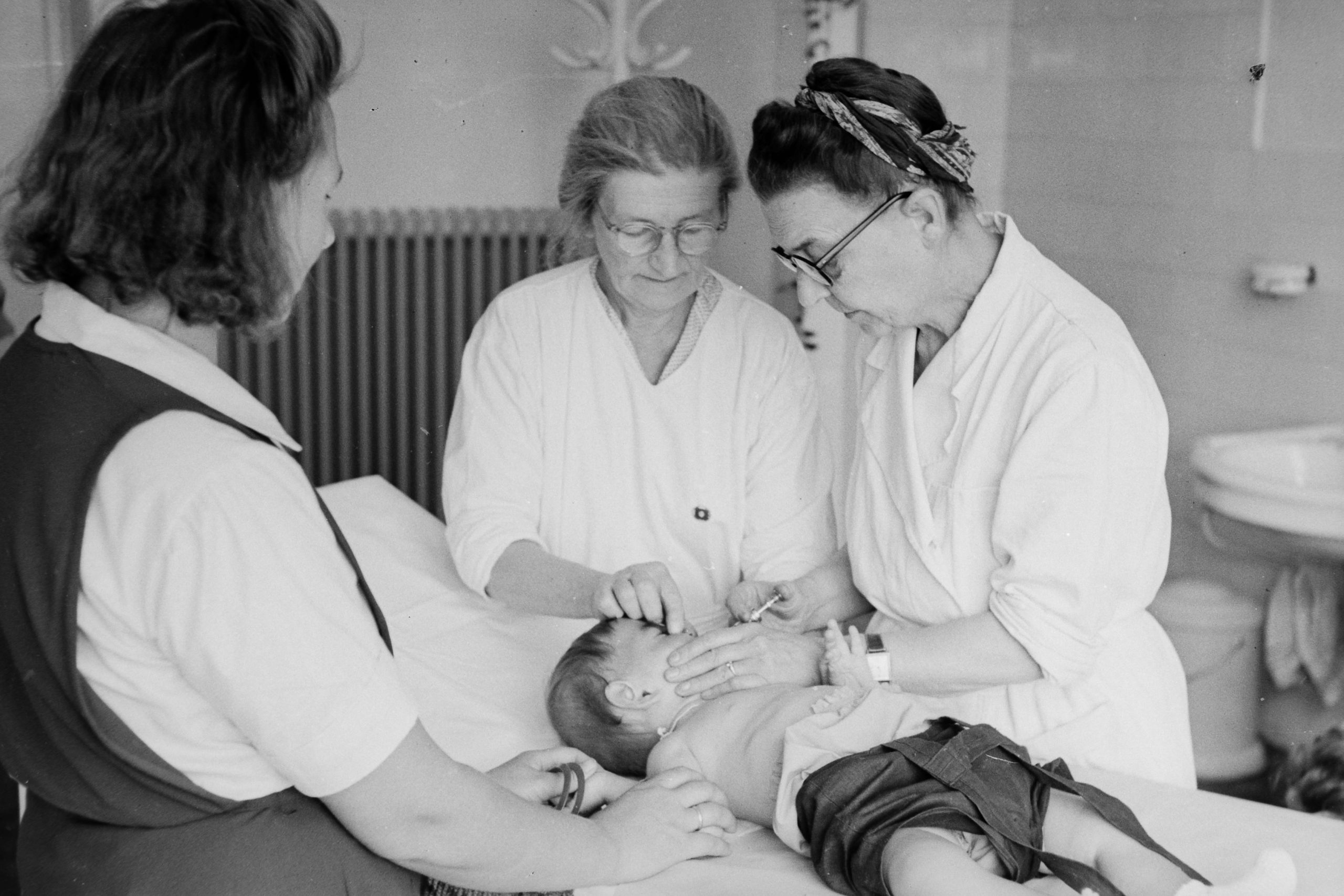
The pediatric ward at the National Social Security Institute (OTI), Áruház Square, Csepel, 1949. ©Fortepan / Kovács Márton Ernő
The construction of expert knowledge in child-rearing intersects with medical knowledge production and the prevailing power structures. This framework assumes that knowledge originates from trained professionals, interpreting it as reliable and scientific. In contrast, the concept of authoritative knowledge is more permissive regarding the source of knowledge, acknowledging the agency of laypeople in shaping childcare practices.[5]
This raises the question: who owns knowledge? At the beginning of the twentieth century, the image of the good mother became increasingly tied to expertise, as child welfare and caregiving professions evolved, opening space for women as professionals in medical environments.
These women—midwives, nurses, and physicians—occupied intermediate positions within the power hierarchy, bridging the state and ordinary people. These lower-level agents, with varying degrees of autonomy, helped shape the notion of expertise.[6] Consequently, the twentieth century marked the first time in modern history that women could emerge as authorities on matters concerning the female body, influencing both public and private reproductive discourse. This professionalization tendency was caught between inherited knowledge, folk medicine, customs, and highly medical approaches.[7]
The differences in types of knowledge lead to a second question: what is the source of knowledge? With professionalization, knowledge about pregnancy, childbirth, child-rearing, and intimacy moved beyond the personal spheres of family, kinship, and friendship, and books became a central medium for its transmission. This shift signaled modernization, generating tensions as it distanced individuals from the knowledge and customs of previous generations. The consolidation of medical authority, alongside the widespread distribution of books, transformed women’s relationships with their bodies. On one hand, they became more vulnerable within healthcare institutions; on the other, they gained access to more reliable information about pregnancy, childbirth, and infant care.
In the twentieth century, child-rearing was transformed into a scientific enterprise, managed by experts. Among them was Emmi Pikler (1902–1984), a pioneering pediatrician whose work in postwar Hungary reshaped infant care under socialism and beyond. As a physician and childcare specialist, Pikler played a significant role in developing infant care practices and institutions in the post–World War II era. Of Austro-Hungarian Jewish origin, Pikler was connected to interwar reform education and left-wing intellectual circles. Upon receiving her medical diploma in Vienna, Pikler returned to Hungary and opened a private practice in Budapest. After World War II, she was appointed director of the Lóczy Residential Infant Home—an institution built on socialist state ideals—where she developed her distinctive caregiving model.[8]
Pikler’s first book, What Does the Baby Already Know?, was published in 1940, providing advice for young mothers on early development. Her second childcare manual, Mothers’ Book, was first published in 1956 and reissued several times until 1985, thus spanning almost the entire socialist period. Based on the narrative analysis of these volumes, this article examines two debated aspects of her method: the “cry-it-out” approach and scheduled breastfeeding.
What Does the Baby Already Know? devoted particular attention to what Pikler termed “raising children to cry,” by which she referred to the tendency of inexperienced parents—especially mothers—to respond to an infant’s crying with immediate soothing, rocking, or holding. In her view, such practices unintentionally conditioned children to cry more often and therefore represented an inadequate way of addressing infant behavior.
She argued that infants who were allowed to cry until about six months of age later developed greater autonomy and problem-solving abilities. During this early stage, Pikler regarded caretaking practices such as prolonged holding or “unwarranted” rocking—unless driven by a physical need—as a form of spoiling. Her position on crying was not exceptional in its time but rather aligned with prevailing conceptions of the child as an individual requiring discipline and order.[9]
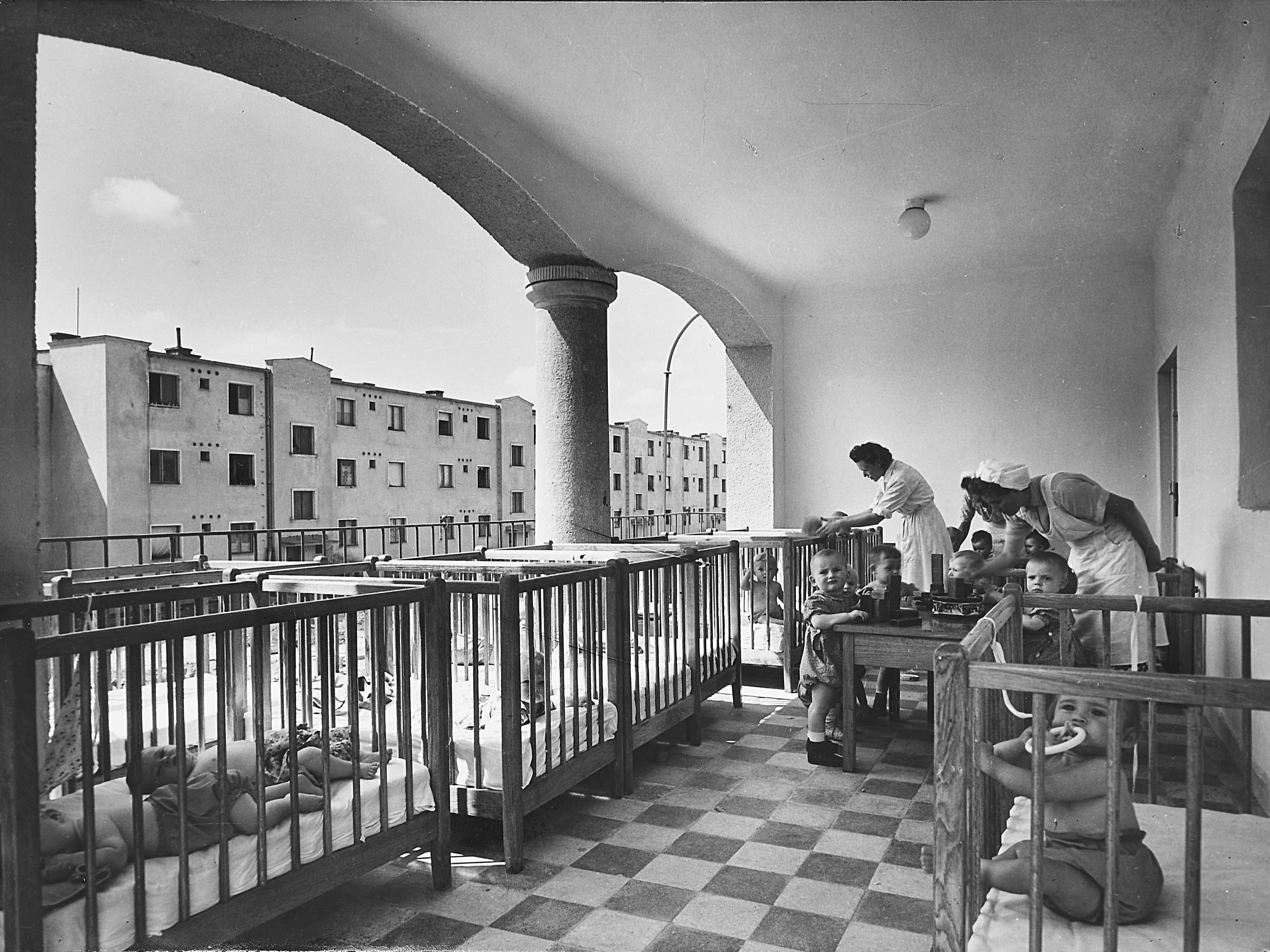
An infant home in Stalin-City, 1959. ©Fortepan / Peti Péter
In Mothers’ Book, Pikler distinguished maternal love from caregiving, framing the latter as a skill to be learned rather than an instinct directly tied to affection. She argued that the consistent presence of a primary caregiver—ideally the mother—was most beneficial for the infant, enabling the formation of a secure and intimate bond. She emphasized regularity and precision in routines of feeding, bathing, and sleeping, thereby promoting a stable and predictable daily rhythm for the child.[10] Although, from the late 1940s, Pikler served as the head of a residential infant home for children who lacked family care, her manual was directed at parents rather than institutional caregivers.
The second debated issue in Pikler’s book concerned scheduled breastfeeding. From the early twentieth century onward, medical literature recommended feeding infants five to six times a day at three-hour intervals—a practice justified by concerns for health preservation and hygiene.[11] In this framework, the physician decided what was beneficial for the child’s well-being, and the “good mother” was one who followed medical instructions. Mothers’ Book also placed particular emphasis on the necessity of medical supervision. In the 1963 edition, scheduled feeding (every three hours) was still recommended; by the 1980s, however, revised editions advocated feeding on demand, thereby aligning with the prevailing scientific consensus.[12] In Pikler’s view, infants were calmer within a stable and predictable routine.
In both books, motherhood was framed as a learnable ability grounded in expert knowledge, explicitly distancing care from instinct or “natural” affection. Drawing on the concept of “rational love,” What Does the Baby Already Know? advanced the view that learning proper caregiving was the mother’s duty, since only through such acquired competence could an infant’s needs be adequately recognized and met.
Caring labor was conceived as both an integral aspect of motherhood and a learnable process, regarded as essential for the construction of socialist society. Emmi Pikler thus sought to institutionalize a new, medically informed model of child-rearing, in which maternal competence was subordinated to the authority of medical expertise. In doing so, she built on the historical legacy of maternalist policies that linked caregiving to motherhood, while simultaneously promoting a professionalized form of caregiving.
[1] Péter Nádas, Világló részletek I (Budapest: Jelenkor, 2017).
[2] Risa Cromer and Lea Taragin-Zeller, “Reproductive Righteousness of Right-Wing Movements: Global Feminist Perspectives,” Women's Studies International Forum 105 (2024): 102947, https://doi.org/10.1016/j.wsif.2024.102947.
[3] Andrea Pető and Borbála Juhász, “Legacies and Recipe of Constructing Successful Righteous Motherhood Policies: The Case of Hungary,” Women's Studies International Forum 103 (2024), https://www.sciencedirect.com/science/article/pii/S0277539524000232.
[4] Éva Fodor, The Gender Regime of Anti-Liberal Hungary (Palgrave Pivot, 2020).
[5] Brigitte Jordan, “Authoritative Knowledge and Its Construction,” in Childbirth and Authoritative Knowledge: Cross-Cultural Perspectives, eds. Robbie E. Davis-Floyd and Carolyn Fishel Sargent (University of California Press, 1997), 55–79.
[6] Zita Deáky and Lilla Krász, “Lészen az Istennek áldásábúl magzattyok…” Születés és anyaság a régi Magyarországon, 16. század – 20. század eleje (Budapest: Bölcsészettudományi Kutatóközpont Történettudományi Intézet, 2024).
[7] Fanni Svégel, “The Role of Women as Agents and Beneficiaries in the Hungarian Family Planning System (1914–1944),” Journal of Family History 48, no. 3 (2023): 338–353, https://doi.org/10.1177/03631990231160222.
[8] Fanni Svégel, “Anyaság és gyereknevelés a professzionalizáció és a politika szorításában: Pikler Emmi munkássága,” Opuscula Theologica Et Scientifica 3, no. 1 (2025): 231–260, https://doi.org/10.59531/ots.2025.3.1.231-260.
[9] Emmi Pikler, Mit tud már a baba? (Budapest: Medicina Könyvkiadó, 1959), 9–13.
[10] Magda László and Emmi Pikler, Anyák könyve (Budapest: Medicina Könyvkiadó,1963).
[11] Zsuzsa Bokor, “‘Separation Is Required in Our Special Situation’: Minority Public Health Programs in Interwar Transylvania,” Hungarian Historical Review 12, no. 3 (2023): 395–432, https://doi.org/10.38145/2023.3.395.
[12] László and Pikler, Anyák könyve.



November 19, 2025
On November 10, 2025, a delegation from Jilin University, led by Professor and Executive Vice President Cai Lidong, paid a courtesy visit to Sylff Association Chairman Yohei Sasakawa.
Jilin University joined the Sylff community in 1992 and has produced more than 1,200 Sylff fellows to date. Professor Cai and Chairman Sasakawa reflected warmly on Jilin University’s longstanding ties with the Nippon Foundation and the Tokyo Foundation, and the two expressed hope for even deeper collaboration in the years ahead.
Professor Cai noted that he had long wished to visit Japan, as he was unable to attend the Sylff Administrators Meeting with five Chinese Sylff institutions at the Tokyo Foundation in 2024. He expressed his delight that the visit had finally materialized.
He also conveyed his gratitude for the enduring partnership and stated that Jilin University remains committed to actively supporting initiatives that foster the development of future leaders.
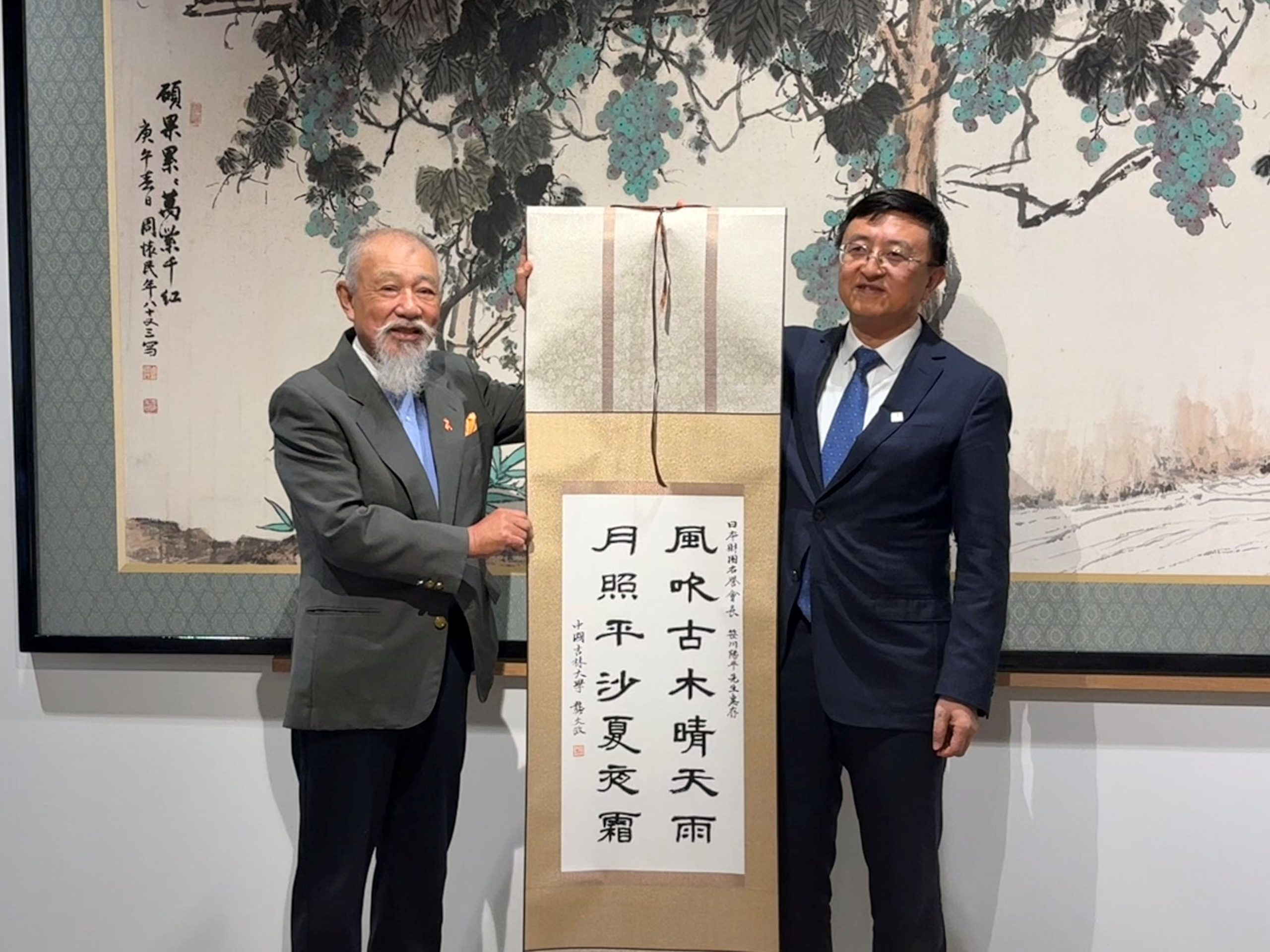
Sylff Association Chairman Yohei Sasakawa, left, and Jilin University Professor Cai Lidong.

October 24, 2025
By 30648
Ghana’s renewable energy ambitions highlight Africa’s clean energy paradox: technically sound policies coexist with persistent implementation barriers, writes Seth Owusu-Mante (Fletcher School of Law and Diplomacy, 2019), hindering progress toward energy security, sustainability, and inclusive growth.
* * *
Climate change has emerged as one of the most pressing threats to sustainable development, compelling governments worldwide to adopt ambitious policies to accelerate the global transition to clean energy.
In Africa, the stakes are especially high: as the region most vulnerable to climate impacts (IEA 2023a), African countries must adapt to intensifying climate risks and at the same time contribute meaningfully to global mitigation efforts, all against the backdrop of persistent socio-economic challenges.
Crucially for the continent, mitigating the climate crisis by leveraging its abundant renewable energy resources is not only a climate imperative but also a pathway to job creation (IEA 2023b; Hanna et. al. 2024), enhanced energy access (Fagbemi 2025; Alex-Oke et al. 2025), and inclusive economic growth for millions currently without electricity (GIZ 2024; Alex-Oke et al.).
Ghana’s experience encapsulates both the promise and the pitfalls of Africa’s clean energy transition. Over the past decade, the country has developed one of the most comprehensive renewable energy policy frameworks on the continent, guided by policies and legislation, such as the Renewable Energy Act, 2011 (Act 832), the Renewable Energy (Amendment) Act, 2022 (Act 1045) , the Renewable Energy Master Plan (2019), and the National Energy Transition Framework (2022). These were designed to diversify the national energy mix, enhance energy security, expand energy access, and align the country with global energy and decarbonization targets under the Paris Agreement.
However, despite the technical soundness of these policies, Ghana’s renewable energy deployment remains far below expectations. As of 2025, only 132 MW of non-hydro renewables have been installed, representing just 2.3% of national capacity (see figure below), compared to the 1,363 MW target set for 2030 by the Renewable Energy Master Plan (2019). This stark gap between ambition and reality provided the central motivation for my research.
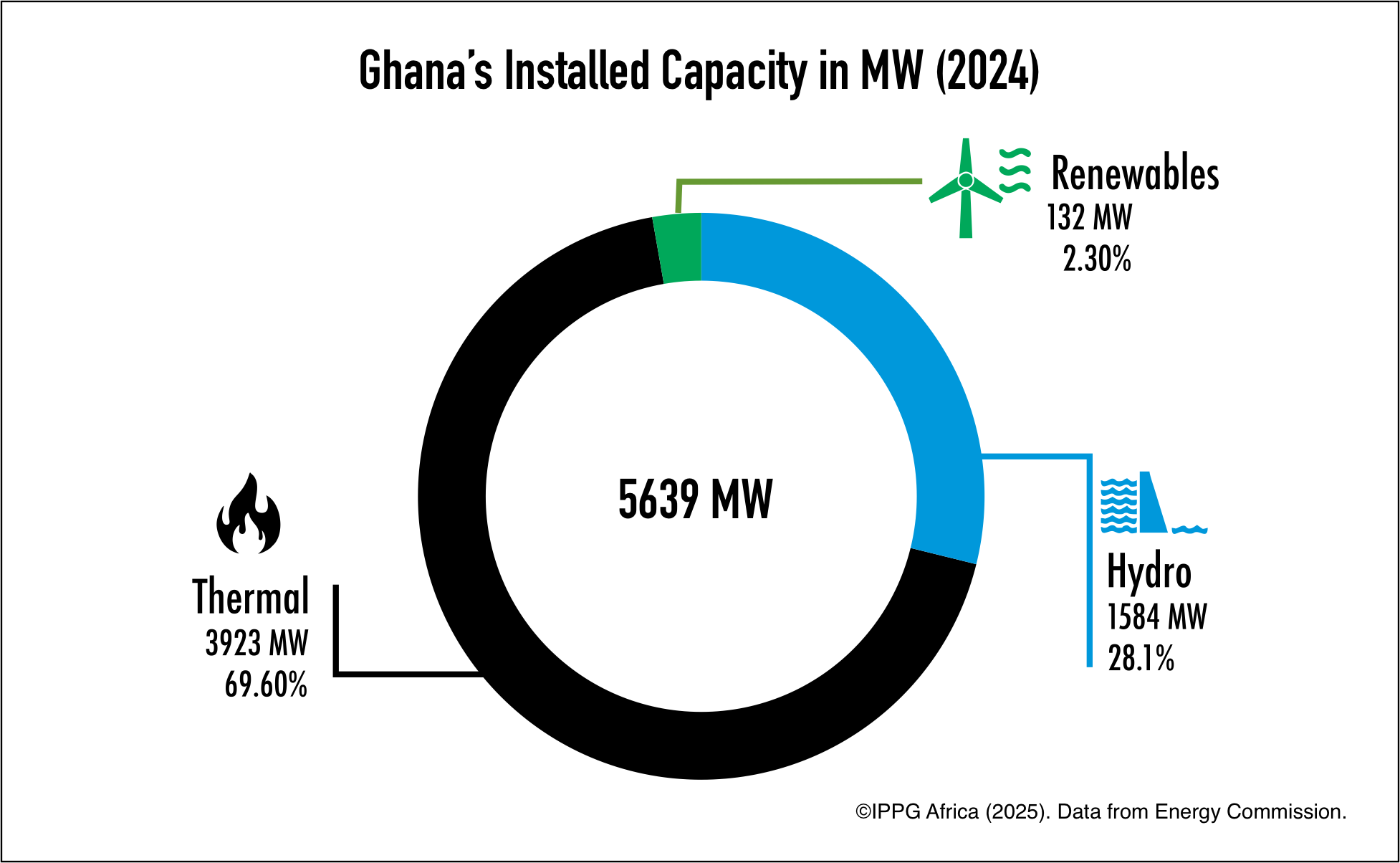
Source: International Perspective for Policy Governance (IPPG Africa 2025).
The study set out to investigate both policy and implementation gaps within Ghana’s renewable energy sector and to assess their implications for energy access, reliability, security, and climate goals. To accomplish this, a mixed-methods approach was employed.
First, a documentary review examined Ghana’s major renewable energy frameworks, situating them within the broader African and global policy context. Second, a survey of energy experts was conducted, and the results were further investigated through interviews with policymakers, regulators, government officials from the Ministry of Energy and Green Transition, Bui Power Authority, Volta River Authority, Electricity Company of Ghana, as well as project developers, academics, civil society experts, and community representatives. This combination of qualitative and quantitative data enabled a robust assessment of the perceived effectiveness of existing policies, the most critical barriers to their success, and the lived realities of government officials tasked with implementation.
The findings reveal that Ghana’s policy frameworks are widely regarded as comprehensive and well-structured. Stakeholders highlighted the Renewable Energy Master Plan and the National Energy Transition Framework as the most effective policy initiatives, indicating the country’s capacity to adopt technically sound strategies.
Yet, the findings also demonstrate that the country’s sound policy design is undermined by persistent policy gaps. Chief among these is the absence of adequate policy instruments, such as tax credits, subsidies, and other financial incentive policies, that could attract private investments to make renewables competitive with conventional sources.
Respondents also pointed to weak integration of renewable energy into broader national energy planning, the absence of systematic policy review mechanisms, and the lack of policy provisions in emerging areas such as storage and battery utilization. Collectively, these omissions have created a fragmented policy environment that fails to adapt to technological changes and evolving market dynamics.
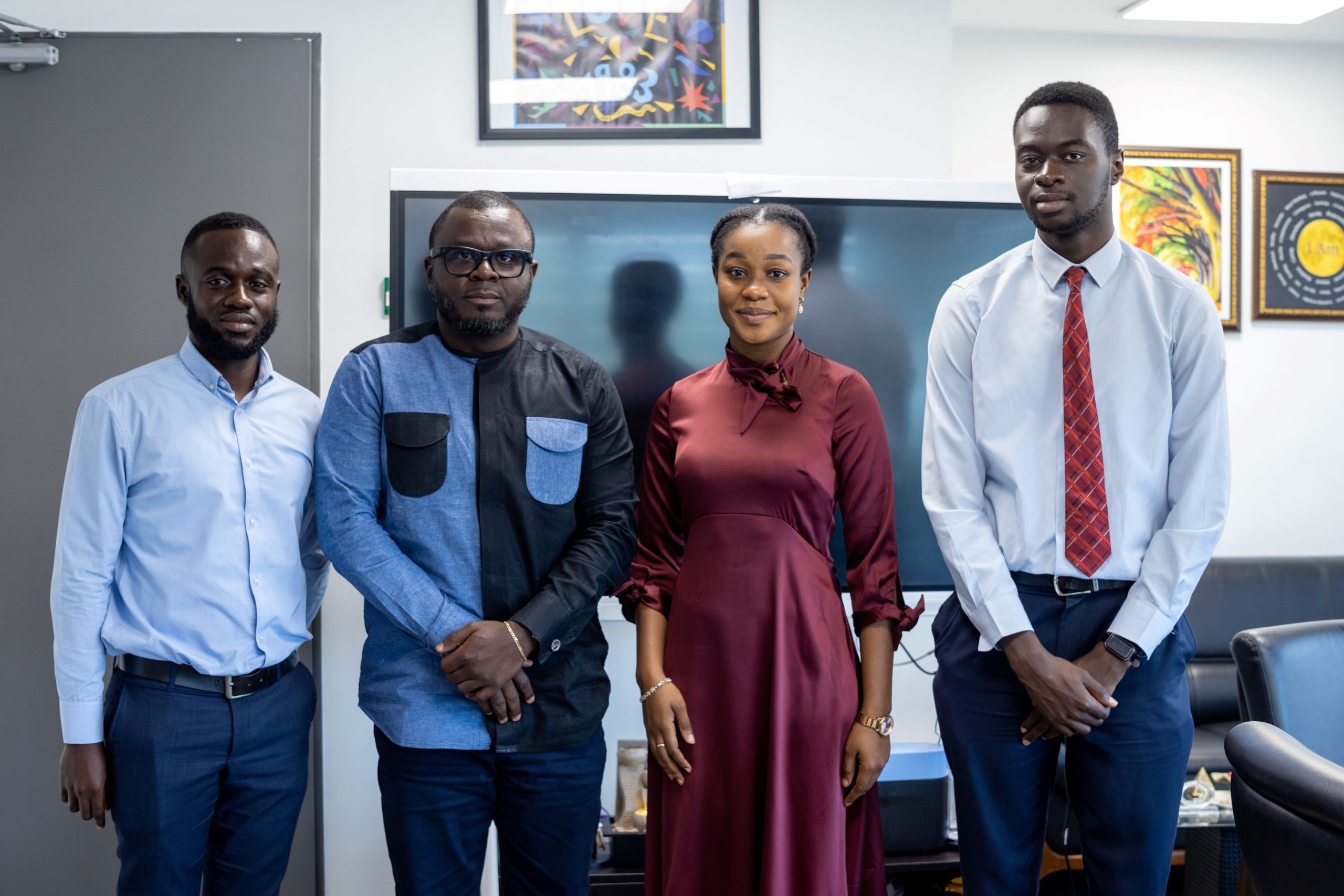
A group photo following an interview with Director of Renewable Energy Ing. Peter Acheampong of Bui Power Authority, second from left, flanked by project field supervisor Eric Agyemang, far left, and research assistants Nii Ayikwei Quaye, far right, and Emmanuella Biney.
The study also uncovered a set of equally significant implementation gaps. The most frequently cited implementation barrier was limited access to financing mechanisms, with nearly 90% of the survey respondents emphasizing the inability of developers to secure long-term, affordable finance. Local banks view renewable projects as high-risk ventures, and the absence of government guarantees or innovative financing instruments further limits investment. Political interference and inconsistent leadership also emerged as recurring themes, with stakeholders noting how renewable energy initiatives are often tied to particular administrations and lose momentum when political priorities shift. Weak regulatory enforcement compounded these challenges, as institutions tasked with oversight often lack the capacity or authority to ensure compliance and accountability. Together, these implementation gaps erode investor confidence and slow down the deployment of projects that could otherwise contribute meaningfully to Ghana’s energy transition.
The consequences of these gaps extend well beyond missed megawatts. They jeopardize Ghana’s energy security by leaving the country over-reliant on hydropower, which is vulnerable to seasonal fluctuations, and on imported fossil fuels, which expose the economy to volatile international markets, resulting in the country’s over $3 billion energy sector debt. They also threaten Ghana’s ability to meet its nationally determined contributions (NDC), which include reducing greenhouse gas emissions by 64 MtCO₂e by 2030.
Moreover, the lack of progress undermines opportunities for job creation, industrial development, and equitable access to modern energy services. Although Ghana has one of the highest electricity access rates in Sub-Saharan Africa at nearly 90%, the persistence of implementation failures means that energy remains unreliable, expensive, and insufficiently sustainable.
This research carries important implications for both academic scholarship and societal practice. For scholars, it contributes to the growing body of literature on renewable energy transitions by clearly distinguishing between gaps in policy design and failures in policy implementation. Previous research has often emphasized technical potential or legislative frameworks without interrogating why outcomes remain consistently underwhelming. Through the integration of empirical evidence from surveys and interviews with government officials, policymakers, and other key energy experts, this study offers a more nuanced understanding of the institutional, financial, and political dynamics that constrain energy transitions in developing country contexts.
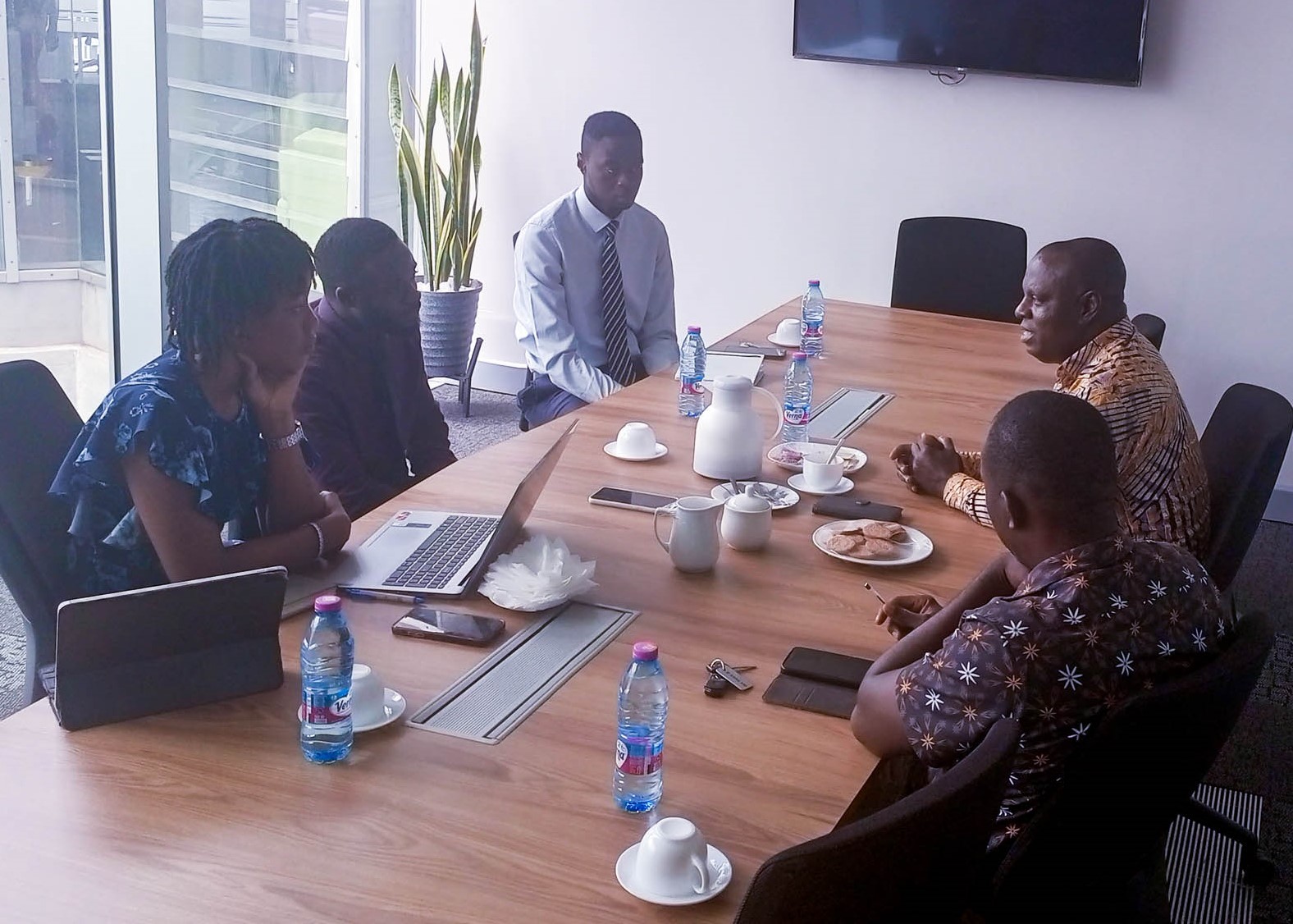
Project RAs Emmanuella Biney and Nii Ayikwei Quaye with their field supervisor Eric Agyemang, left, interviewing Manager for Renewable Energy Edward Ochire and Assistant Electrical Engineer Osborn Amoh of the Electricity Company of Ghana Limited, right.
For society, the findings highlight the urgent need to shift the focus from policy formulation to effective implementation by government officials. Addressing financing barriers is paramount. Instruments such as sovereign guarantees, green bonds, and put-call option agreements could reduce investor risk and unlock private capital for renewable projects. Strengthening regulatory institutions, enhancing inter-agency coordination, and insulating energy policy from partisan politics are equally critical steps. A more transparent and participatory approach, including periodic policy reviews and stronger community engagement, would ensure that renewable energy strategies remain responsive to technological changes and societal needs. Without these measures, Ghana risks perpetuating a cycle of ambitious targets and underwhelming results.
In sum, this study demonstrates that Ghana’s renewable energy transition is not merely a technical project but a deeply institutional and political endeavor. The country possesses abundant renewable resources, proven policy ambition, and a demonstrated ability to execute large-scale energy programs, as shown by its electrification achievements.
What remains lacking is the translation of policies into bankable projects, enforceable regulations, and resilient institutions. Bridging this gap will not only strengthen Ghana’s energy security and economic resilience but will also position the country as a continental leader in renewable energy.
The lessons from Ghana resonate beyond its borders, offering insights for other African nations grappling with similar challenges. Moving decisively to address policy and implementation gaps would allow Ghana to transform its renewable energy sector from a story of missed opportunities into one of genuine leadership in sustainable development and inspiration for other African countries.
Alex-Oke, Temidayo, Olusola Bamisile, Dongsheng Cai, Humphrey Adun, Chiagoziem Chima Ukwuoma, Samaila Ado Tenebe, and Qi Huang. 2025. “Renewable energy market in Africa: Opportunities, progress, challenges, and future prospects.” Energy Strategy Reviews 59: 101700.
Deutsche Gesellschaft für Internationale Zusammenarbeit (GIZ). 2024. The Renewable Energy Transition in Africa: Powering Access, Resilience and Prosperity. https://www.giz.de/en/downloads/Study_Renewable%20Energy%20Transition%20Africa-EN.pdf.
Fagbemi, Bomi. 2025. “Africa’s Green Energy Transition.” The Africa Center, May 29. https://theafricacenter.org/news/detail/Africa-s-Green-Energy-Transition.
Hanna, Richard, Philip Heptonstall, and Robert Gross. 2024. “Job creation in a low carbon transition to renewables and energy efficiency: a review of international evidence.” Sustainability Science 19, no. 1: 125–50.
International Energy Agency (IEA). 2023a. Africa Energy Outlook 2022: Special Report. Revised version, May 2023. Paris: IEA. https://iea.blob.core.windows.net/assets/220b2862-33a6-47bd-81e9-00e586f4d384/AfricaEnergyOutlook2022.pdf.
International Energy Agency. 2023b. World Energy Employment 2023. Paris: IEA. https://iea.blob.core.windows.net/assets/8934984a-0d66-444f-a36f-641a4a3ef7de/World_Energy_Employment_2023.pdf.
International Perspective for Policy & Governance (IPPG Africa). 2025. “The Case for Ghana’s Renewable Energy Transition: A Path to Sustainability and Economic Resilience.” (Authored by Seth Owusu-Mante.) April 25. https://www.ippgafrica.org/blog-post/the-case-for-ghanas-renewable-energy-transition-a-path-to-sustainability-and-economic-resilience/.



October 14, 2025
On October 6, the Sylff Association secretariat had the pleasure of welcoming Jennifer Schulz (formerly Moore), who received a Sylff fellowship in 2000 while working toward a master’s in health sociology at the University of Canterbury, New Zealand. Now an associate professor at the University of New South Wales in Australia, she blends expertise in health social sciences, law and public health medicine to advocate for more compassionate and effective responses to medical injuries.
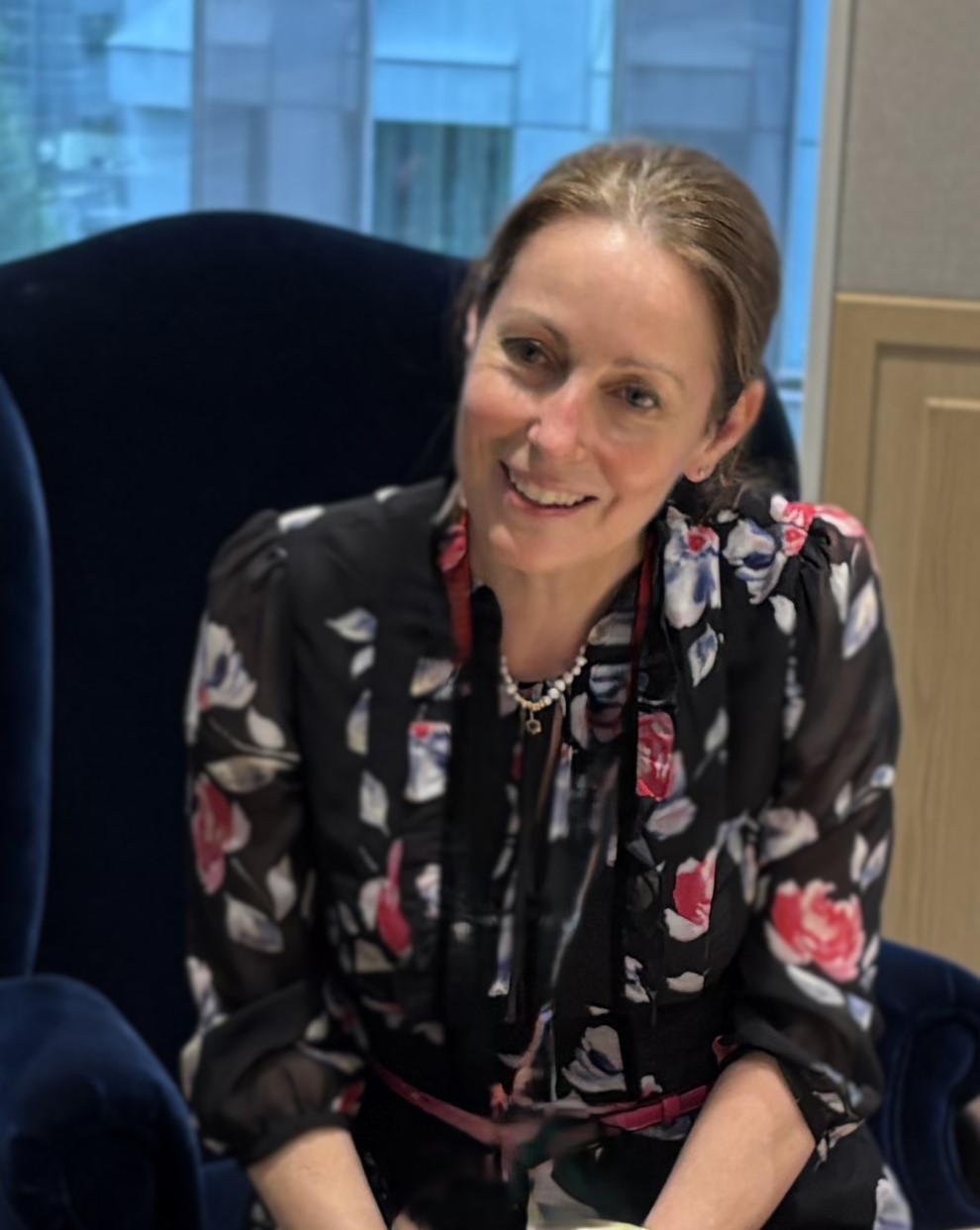 Schulz was visiting Japan to pursue a collaborative partnership with Kobe University, an outgrowth of a presentation she gave at a conference in the city last year.
Schulz was visiting Japan to pursue a collaborative partnership with Kobe University, an outgrowth of a presentation she gave at a conference in the city last year.
“Medical injury is the third leading cause of death in the United States and the second in Australia,” Schulz explained. “It could be a surgical accident or an overdose. A lot of different things can go wrong, even in general practice.”
Her work focuses on helping patients who suffer medical harm, but injured patients often report that litigation can be traumatic, slow, expensive, and does not meet their needs. “The court system often makes them feel even worse.”
Legal cases can also turn health practitioners into “second victims” of harm events, Schulz says. “Having to go to court can be very traumatic for the doctors, too. They didn’t mean to hurt the patient, and they might want to say sorry, but in the courtroom that may be perceived as an admission of fault, despite apology protection laws.”
To address these challenges, Schulz promotes the Communication and Resolution Program—an alternative, no-fault process that allows hospitals to disclose medical injuries, investigate and explain what happened, apologize, and offer compensation when warranted. CRP is a framework for responding to unintentional patient harm by promoting open, honest, and empathetic communication, shifting the focus from the traditional “deny and defend” approach to a patient-centered model aimed at improving patient safety.
In a recent journal article, Schulz documented the story of a young patient who was injured in a hospital when she was just 15. “It was an overdose, and she almost died. Her mental health deteriorated, she stopped going to school, and she had suicidal thoughts. It was very sad.”
Schulz had interviewed her for research on improving resolution after medical injury—conducted with the help of a Sylff Leadership Initiatives grant (2018–19). “I’ve kept in touch with her, and she’s participated in four studies with me. Now she’s graduated from university, and guess what she is? A physician’s assistant. She wants to help other people going through a similar experience.”
Schulz’s work is an excellent example of research leading not just to new academic insights but to real life impact, making a tangible difference in people’s lives. She worked for the New Zealand government as a legal and policy adviser in 2011–12, undertaking a socio-legal study on coroners’ recommendations across several countries, collecting data and conducting more than 100 interviews with over 40 respondents.
Her findings were published in a landmark 2016 book that revealed a need for stronger mechanisms to translate coronial recommendations into population-level mortality prevention. This prompted legislative changes, driven not by statistics alone but by the powerful personal testimonies of those interviewed.
“Politicians didn’t actually care about the numbers. It was only after they learned of the patients’ stories that they said, ‘We have to change the law.’”
Schulz’s next project is to examine medical harm resulting from the use of artificial intelligence—a timely and under-researched area. “AI is being used by doctors in New Zealand to take notes during consultations. But mistakes by these AI scribes have already led to physical harm.” Robotic-assisted surgery is another domain where AI-related harm could emerge. “The technology is exciting, but we need to understand its risks and build safeguards.”
“I left academia to work in government for a while, but my passion is in teaching and working with young minds,” Schulz maintains. In 2018, her students selected her for the Inspiring Teacher Award, given to the best instructor in a first year UNSW undergraduate program. They called her a “phenomenal teacher” with “endless enthusiasm and passion that she brings to each lesson” and a “perfect mentor” who influenced their study direction.
Schulz laments the global trend toward reduced spending on many programs in the humanities. “Quantitative, scientific research is like the skeleton, but the humanities are the flesh,” she explained. “They are foundational, helping us understand what the numbers mean to people.”
Even as her daughter dreams of becoming a scientist, Schulz hopes she will also embrace the humanities—an education that fosters empathy and critical thinking.
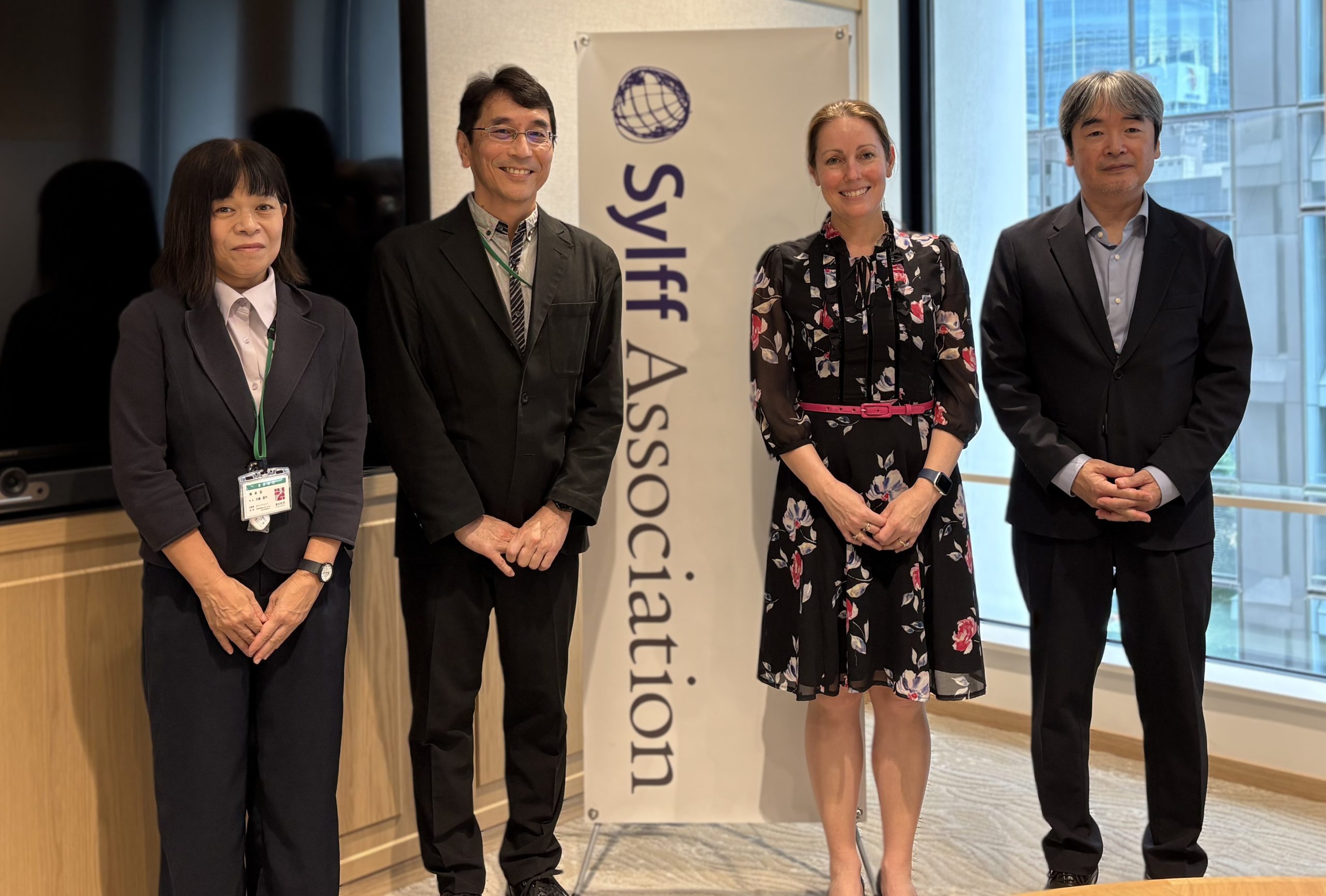 Jennifer Schulz’s visit was a reminder of how research rooted in empathy can drive meaningful change. Her work not only advances academic understanding but also transforms lives—helping patients heal, guiding policy reform, and inspiring future generations. The Sylff Association secretariat is honored to support her work and looks forward to the continued ripple effects of her leadership. (Compiled by Nozomu Kawamoto)
Jennifer Schulz’s visit was a reminder of how research rooted in empathy can drive meaningful change. Her work not only advances academic understanding but also transforms lives—helping patients heal, guiding policy reform, and inspiring future generations. The Sylff Association secretariat is honored to support her work and looks forward to the continued ripple effects of her leadership. (Compiled by Nozomu Kawamoto)

October 2, 2025
On September 8, 2025, at Samantha Krida Hall, Universitas Brawijaya, Indonesia, the rector, Professor Widodo, inaugurated A. Faidlal Rahman as vice dean for academic affairs of the Faculty of Vocational Studies. The ceremony was conducted in a solemn atmosphere and attended by senior university officials.
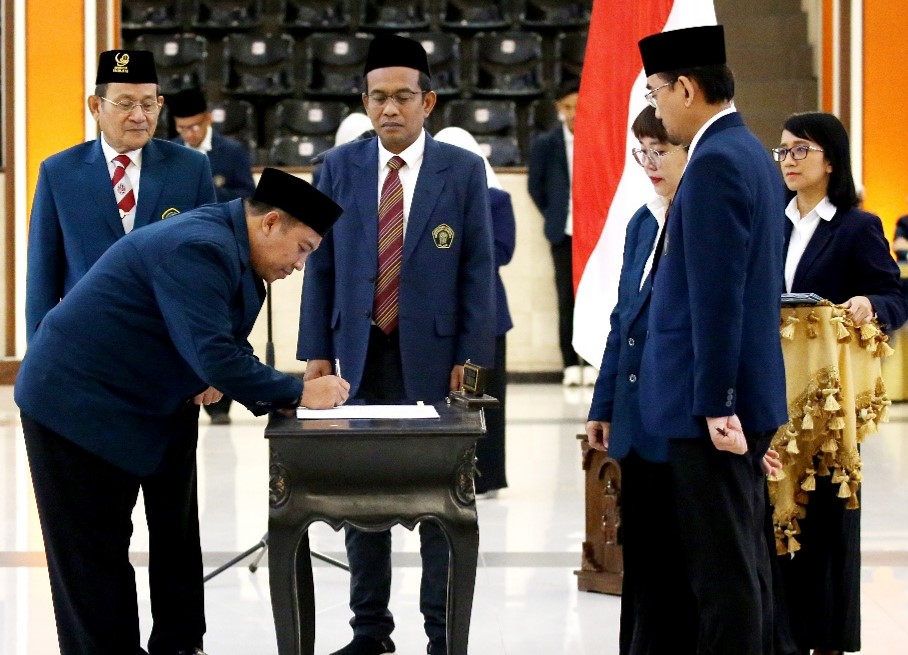
At the inauguration ceremony, A. Faidlal Rahman signs the official document certifying his appointment as vice dean for academic affairs in the Faculty of Vocational Studies, as the rector, right, and other professors look on.
Rahman received his Sylff fellowship from Gadjah Mada University in 2008 and 2009 while working toward an MSc in tourism studies. He holds a bachelor’s degree in tourism economics and completed his doctoral degree at the Faculty of Tourism, Universitas Udayana, Bali. He is also a Certified Hospitality Educator (CHE).
In his new capacity, he will be responsible for advancing vocational education at Universitas Brawijaya by shaping academic policies; designing curricula that respond to the evolving needs of industry, business, and the workforce; as well as elevating the quality of teaching, research, and scholarly publications.
He is also tasked with strengthening the contribution of lecturers and students to the university’s tridharma—teaching, research, and community service—ensuring that the Faculty of Vocational Studies consistently produces graduates who are skilled, adaptive, and globally competitive.
As vice dean, he will give priority to accelerating the faculty’s internationalization through deeper engagement with overseas universities and stronger collaboration with global industries. The faculty aims to broaden opportunities for joint research, enrich its curriculum with international perspectives, provide access to internships abroad, and expand academic exchange programs for both faculty members and students.
Rahman hopes to leverage the Sylff network of prominent professionals at leading institutions as a platform for building meaningful international collaboration. He envisions creating long-term partnerships with universities and industries worldwide, not only strengthening the faculty’s role as a leading provider of vocational education in Indonesia but also promoting its evolution into an internationally recognized center of educational excellence.

September 29, 2025
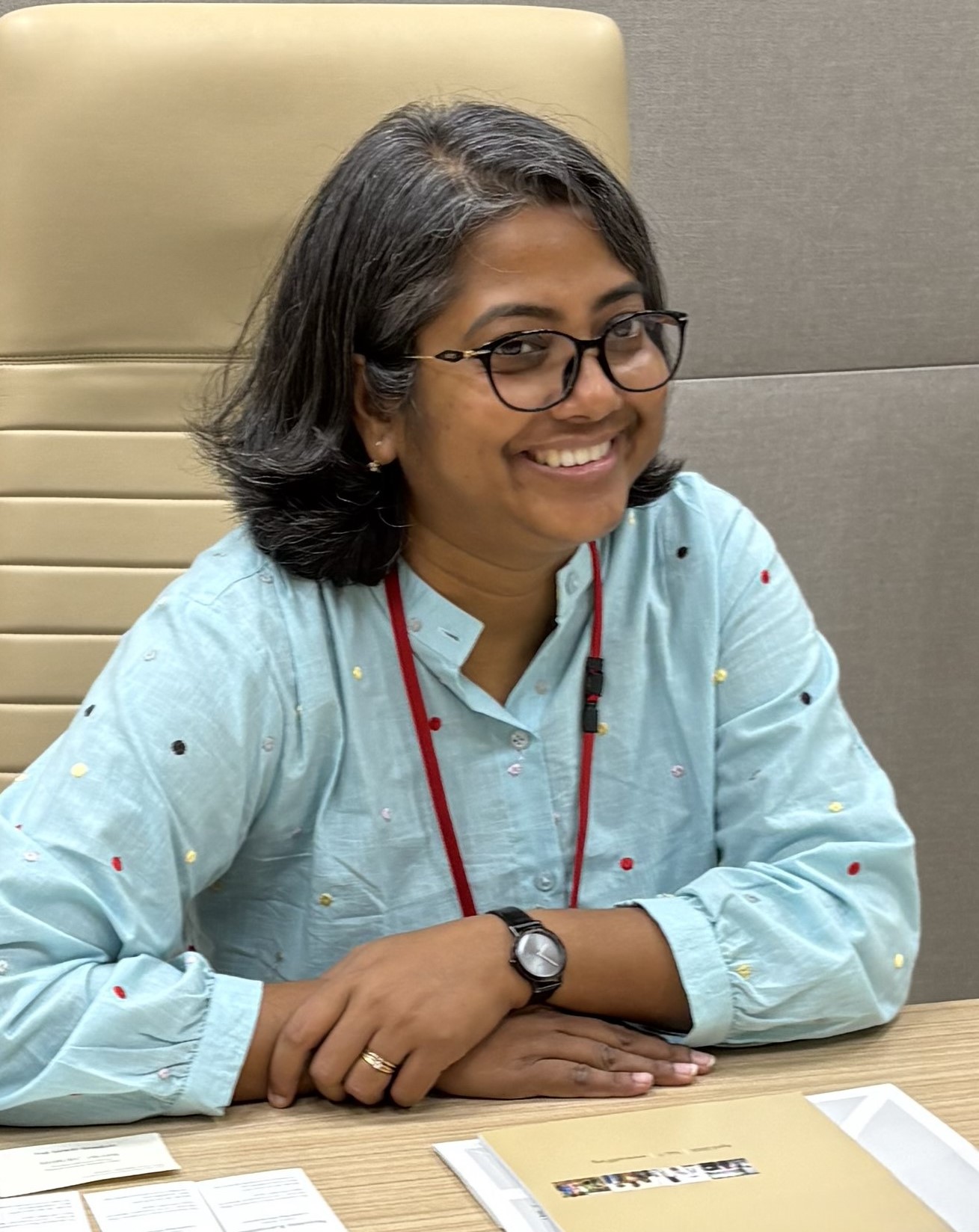 On September 19, 2025, the Sylff Association secretariat was pleased to welcome Shyamasree Dasgupta, a Sylff fellow at Jadavpur University, during her visit to Japan for the annual Balaton Group Meeting—an international gathering of leading sustainability experts.
On September 19, 2025, the Sylff Association secretariat was pleased to welcome Shyamasree Dasgupta, a Sylff fellow at Jadavpur University, during her visit to Japan for the annual Balaton Group Meeting—an international gathering of leading sustainability experts.
The secretariat had met Dasgupta on several occasions at Jadavpur University, but this marked her first visit to Japan. The Balaton Group—also convening in Japan for the first time—held its meeting from September 21 to 26 in the picturesque highland town of Kiyosato, northwest of Tokyo. The theme of this year’s discussion was “A Changing Climate for Disaster Risk Reduction.”
Dasgupta was selected as a Donella Meadows fellow by the Balaton Group in 2012. She also currently serves as an associate professor in the School of Humanities and Social Sciences at IIT Mandi, India, where her research focuses on energy economics and climate change. “I look into industrial energy use, particularly in India, and how industries respond to different sustainability policies introduced by the government.” In addition, she explores climate change adaptation and the strengthening of socioeconomic pillars to create resilience against climate change.
Located in the Himalayan region, Mandi is part of a prestigious network of 23 Indian Institutes of Technology (IITs) established to foster scientific and technical education and advanced research. “The schools in the IIT system believe that you can’t work in silos. That’s why we don’t have a separate Department of Sociology, History, or Economics. We collaborate across disciplines to address complex challenges.”
One of her major interdisciplinary projects investigates the wide use of biomass as cooking fuel in India, which has been linked to indoor air pollution and health risks, especially for women and children. “We want to understand why people choose biomass, assess the health effects, and estimate the cost of mitigating the problem.”
Dasgupta credits her Sylff fellowship at Jadavpur—awarded during her MPhil studies in 2009 and again from 2011 to 2014 while working for her PhD—with providing a very strong grounding in interdisciplinary research.
“The Sylff program at Jadavpur is very open in nature and is an excellent platform for interaction. It’s also very rigorous and serious business for the fellows. We’re required to attend Progress Review Workshops every three months and make presentations in front of our mentors. If five people were giving presentations, then there’ll be five professors from different disciplines, and everybody will comment on your work. This feedback from many different angles was really helpful.”
She added, “It was very intense, but it prepared us well for our subsequent careers. We get the emails of all new fellows, and we still keep in touch with each other. The Sylff network at Jadavpur remains very strong.”
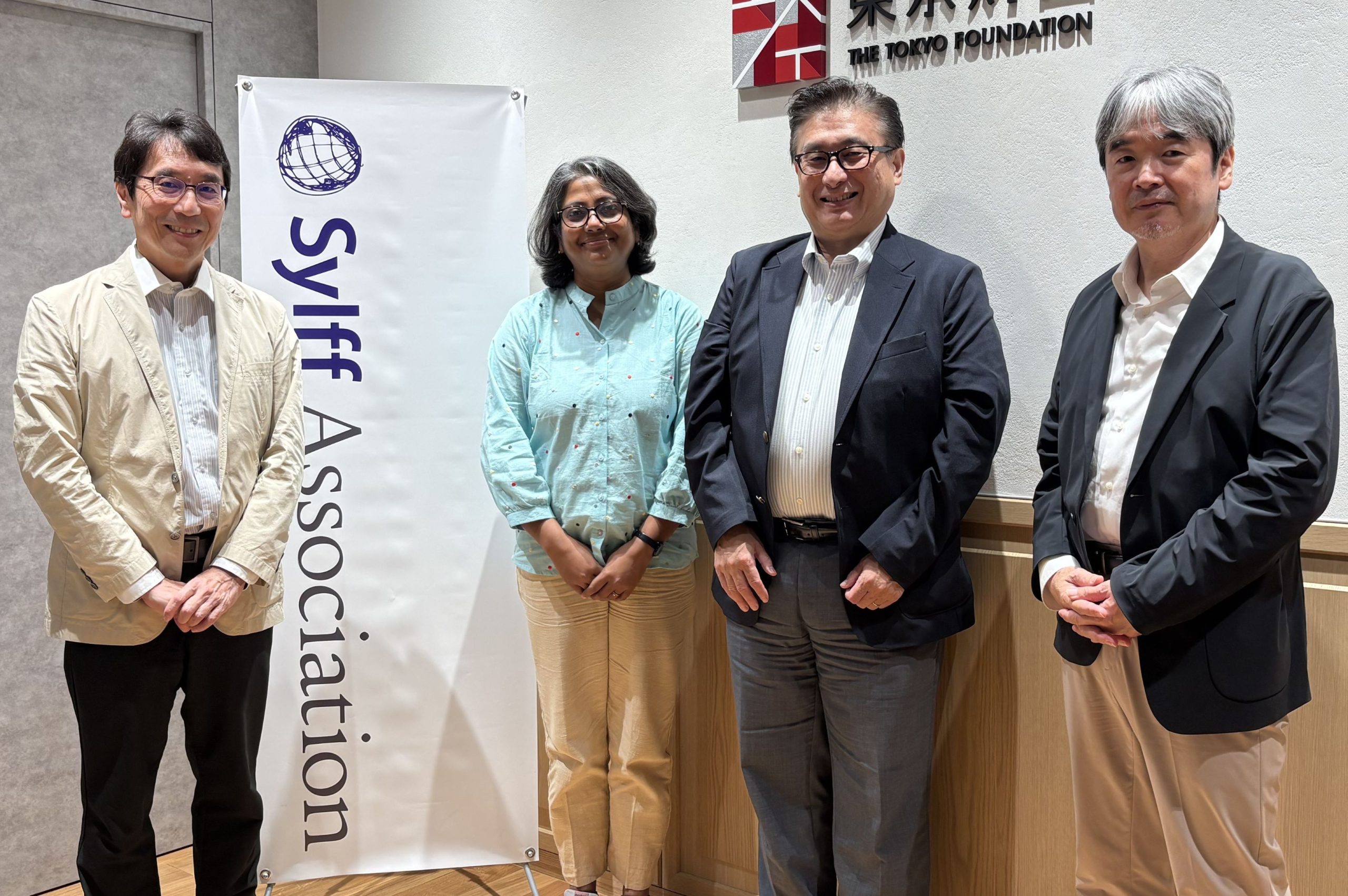 The Sylff Association secretariat is proud of Dasgupta’s ongoing contributions to sustainability in India and beyond. We warmly welcome all fellows and steering committee members to visit us during their time in Tokyo. (Compiled by Nozomu Kawamoto)
The Sylff Association secretariat is proud of Dasgupta’s ongoing contributions to sustainability in India and beyond. We warmly welcome all fellows and steering committee members to visit us during their time in Tokyo. (Compiled by Nozomu Kawamoto)